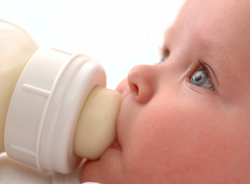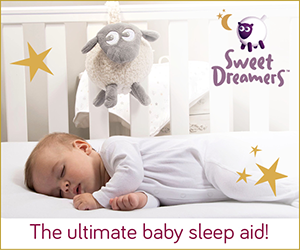Sterilization 101

New parents have a fierce instinct to protect their new bundle of joy. We know it is not possible to shield your baby from every germ, but sterilization of all bottlefeeding equipment is one way you can protect them from bacteria, viruses and even parasitic infections.
Babies are most vulnerable to germs and bacteria in their first year of life. If they come in contact with bacteria found in feeding equipment, it can cause a mild case of thrush or something as serious as gastroenteritis (an illness similar to food poisoning), which was the cause of thousands of infant deaths before the practice of sterilization.
Washing your baby’s bottles with soap and water is not enough. To sterilize your baby’s bottles, separate the bottles, nipples and nipple rings. Wash them all in soap and hot water. Make sure all of the soap is rinsed off and run water through every nipple to ensure the hole is not clogged. Boil a pot of water and place all of the pieces inside. Let the water boil for five minutes, and remove the bottles, nipples and nipple rings by using tongs. Put the items on a clean cloth, paper towel or in your dish rack to dry. Air dry before putting the bottles back together.
A much easier way to sterilize your baby’s feeding equipment, and give you peace of mind, is by using a sterilizer. Sterilizers allow you to sterilize multiple bottles quickly and efficiently – generally, in less than ten minutes. The travel-friendly TFal 2-in-1 Bottle Warmer & Sterilizer, for example, can sterilize six bottles and all of their accessories in nine minutes and can accommodate all bottle sizes. Natural steam sterilization at 95°C is important because it is effective in killing bacteria like Salmonella, E-Coli and Staphylococcus aureus (Staph Infection).
Once your baby starts exploring and putting foreign objects in its mouth, around six months, it seems silly to continue sterilizing bottles. The great part about the T-Fal 2-in-1 Bottle Warmer & Sterilizer is that it is perfect to heat baby jars or bottles even if you are no longer sterilizing bottles.
TIPS
• If you are using a bottle and/or nipple for the first time it must be sterilized.
• Always store breast milk in sterilized containers.
• Check nipples and bottles carefully: any cracks or splits can harbour bacteria.
• Don’t leave sterilized empty bottles out for an extended period of time.
• If you store milk in a bottle for an extended period of time, the bottle should always be sterilized.




